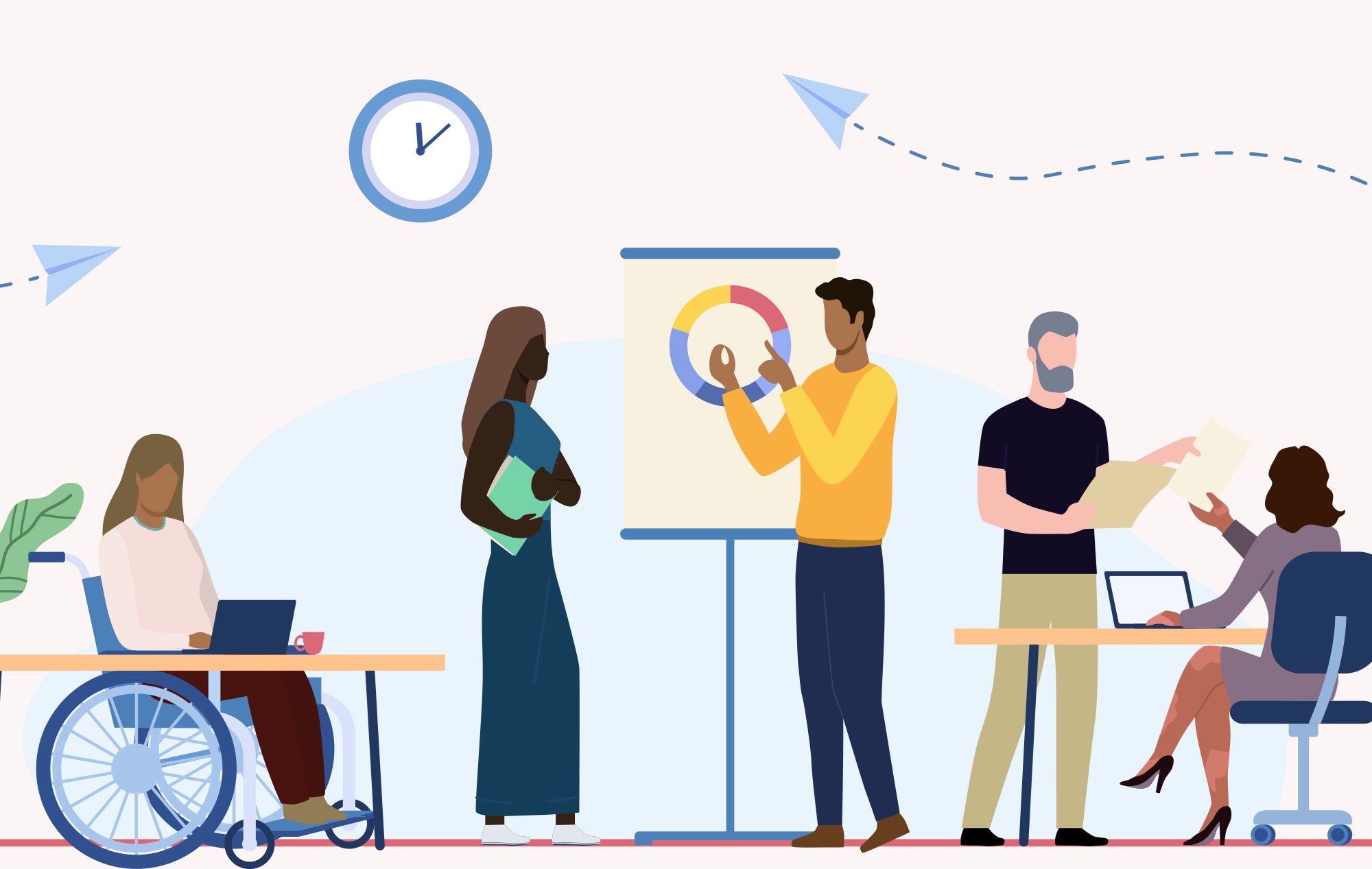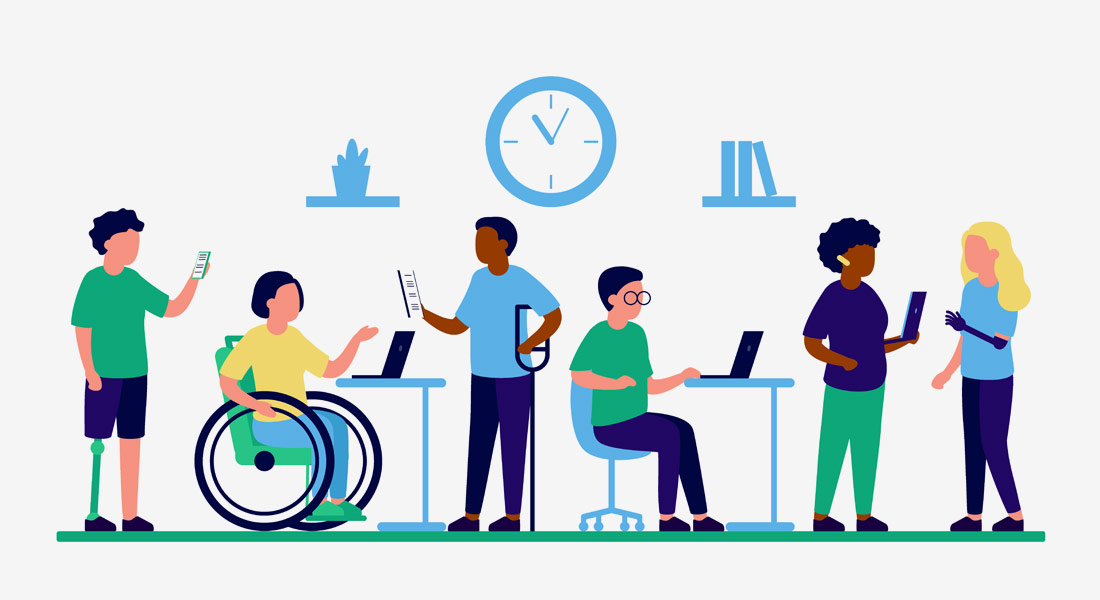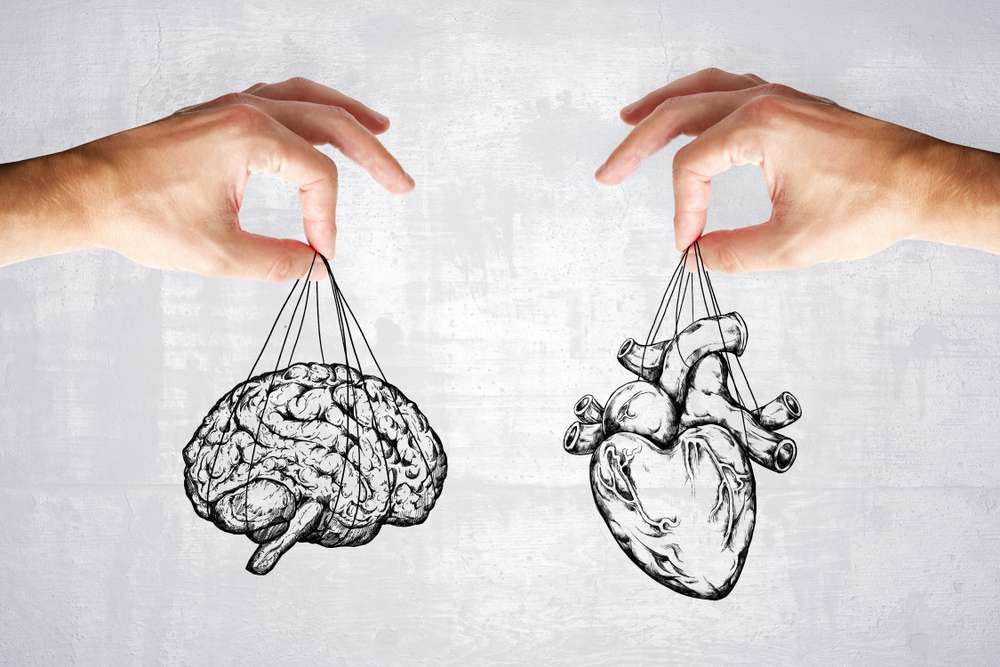
Introduction
The Importance of Special Education
In a bustling second-grade classroom, Ms. Johnson faced a daily challenge that many teachers encounter: how to effectively teach a diverse group of students, including those with special needs. Among her students was Jamie, a bright child with autism who struggled with traditional instructional methods. Initially overwhelmed, Ms. Johnson implemented various special education techniques tailored to Jamie’s unique learning style. The transformation was remarkable—Jamie began to engage more, participate in class discussions, and demonstrate significant academic progress. Stories like Jamie’s highlight the critical importance of special education and the need for adaptive teaching strategies that cater to all students’ needs.
This article aims to explore a range of techniques for adapting lessons for students with special needs and emphasize the importance of these adaptations in fostering an inclusive education environment. By delving into strategies such as individualized education programs (IEPs), differentiated instruction, universal design for learning (UDL), multi-sensory instruction, and assistive technology, we will provide actionable tips and tricks to help teachers effectively support diverse learners and create a classroom where every student can thrive.

Section 1: Understanding Special Education
Definition and Scope
Special Education Defined Special education refers to specially designed instruction tailored to meet the unique needs of students with disabilities. The primary objective of special education is to provide individualized support that allows these students to achieve their fullest potential academically, socially, and emotionally. This includes adapting content, teaching methods, and learning environments to ensure that students with disabilities can access and benefit from the educational curriculum.
Range of Disabilities and Special Needs The scope of special education encompasses a wide range of disabilities and special needs, including but not limited to:
- Learning Disabilities: Such as dyslexia, dyscalculia, and dysgraphia, which affect a student’s ability to read, write, and perform mathematical calculations.
- Speech or Language Impairments: Conditions that impact a student’s ability to communicate effectively.
- Intellectual Disabilities: Conditions like Down syndrome that affect cognitive functioning and adaptive behavior.
- Emotional and Behavioral Disorders: Including anxiety disorders, depression, and ADHD, which can interfere with learning and classroom behavior.
- Autism Spectrum Disorders: A range of conditions characterized by challenges with social skills, repetitive behaviors, and communication.
- Physical Disabilities: Such as cerebral palsy, muscular dystrophy, and other conditions that affect mobility and physical functioning.
- Sensory Impairments: Including visual and hearing impairments that require specialized instructional strategies and accommodations.
Legal Framework
Overview of Laws and Regulations In many countries, the provision of special education services is governed by specific laws and regulations designed to protect the rights of students with disabilities and ensure they receive a free and appropriate public education (FAPE). In the United States, the Individuals with Disabilities Education Act (IDEA) is the cornerstone of special education law.
Key Provisions of IDEA
- Free and Appropriate Public Education (FAPE): Ensures that students with disabilities receive an education tailored to their individual needs at no cost to their families.
- Individualized Education Program (IEP): A legally binding document that outlines the educational goals, services, accommodations, and modifications necessary for the student’s success.
- Least Restrictive Environment (LRE): Mandates that students with disabilities be educated alongside their non-disabled peers to the greatest extent appropriate.
- Parental Participation: Encourages active involvement of parents in the decision-making process regarding their child’s education.
- Procedural Safeguards: Provides protections for students and families, including the right to due process and the right to dispute resolutions.
Importance of These Laws These laws are crucial in ensuring that students with disabilities have equal access to educational opportunities. They provide a framework for schools to follow in delivering specialized instruction and support, promoting inclusivity and preventing discrimination. By adhering to these regulations, educators can help bridge the gap between students with special needs and their peers, fostering a more equitable and inclusive learning environment.

Section 2: Adapting Lessons for Diverse Needs
Individualized Education Programs (IEPs)
Explanation of IEPs and Their Role in Special Education An Individualized Education Program (IEP) is a customized educational plan developed for each student with special needs. The IEP outlines the specific educational goals, services, accommodations, and modifications required for the student to succeed academically and socially. It is a collaborative document created by a team that includes educators, parents, special education professionals, and often the student. The IEP is legally binding and ensures that the student receives a free and appropriate public education (FAPE) tailored to their unique needs.
How to Create and Implement Effective IEPs
- Assess the Student’s Needs: Conduct thorough assessments to understand the student’s strengths, challenges, and areas needing support. This includes academic, behavioral, and social assessments.
- Set Clear, Measurable Goals: Develop specific, measurable, attainable, relevant, and time-bound (SMART) goals based on the assessment data. Goals should be focused on academic achievements as well as social and behavioral improvements.
- Identify Services and Supports: Determine the special education services, related services (like speech therapy or occupational therapy), and any accommodations or modifications needed to help the student achieve their goals.
- Involve All Stakeholders: Ensure active participation from teachers, parents, special education professionals, and the student in the IEP development process. Regular communication and collaboration are key.
- Regular Monitoring and Review: Implement a system for regularly tracking the student’s progress toward their IEP goals. Hold periodic meetings to review and update the IEP as needed to reflect the student’s evolving needs.
Differentiated Instruction
Strategies for Differentiating Content, Process, Product, and Learning Environment Differentiated instruction involves tailoring teaching methods and materials to accommodate the diverse learning styles and abilities of all students. It ensures that each student can access the curriculum and achieve their potential.
- Differentiating Content: Modify what students are expected to learn. For example, provide reading materials at various levels of difficulty, or use different texts on the same topic to cater to students’ reading levels.
- Differentiating Process: Vary the ways students engage with the material. Use flexible grouping, provide choices in activities, and employ various instructional strategies like direct instruction, cooperative learning, and hands-on activities.
- Differentiating Product: Offer different ways for students to demonstrate their understanding. For example, students can choose to write an essay, create a video, design a poster, or give a presentation.
- Differentiating Learning Environment: Adapt the classroom setup to meet the needs of all students. This can include providing quiet areas for independent work, using assistive technology, and arranging seating to facilitate collaboration and communication.
Examples of Differentiated Activities and Assignments
- Reading Groups: Divide the class into small reading groups based on reading level. Each group reads a different book but focuses on the same theme, followed by group discussions and activities tailored to their reading level.
- Math Stations: Set up different stations in the classroom, each focusing on a different math skill. Students rotate through the stations, working on tasks that are appropriate for their skill level.
- Project Choices: For a history unit, allow students to choose from a variety of projects such as writing a report, creating a timeline, building a model, or making a documentary video.
Universal Design for Learning (UDL)
Overview of UDL Principles Universal Design for Learning (UDL) is an educational framework that aims to make learning accessible to all students by providing multiple means of engagement, representation, action, and expression. UDL encourages the design of flexible learning environments and instructional materials that accommodate individual learning differences.
Practical Applications of UDL in Lesson Planning
- Multiple Means of Engagement: Capture students’ interests and motivate them to learn by offering choices in activities, using real-world applications, and providing opportunities for collaboration.
- Multiple Means of Representation: Present information in various ways to address diverse learning preferences. Use visual aids, auditory materials, hands-on activities, and digital resources to convey information.
- Multiple Means of Action and Expression: Allow students to demonstrate their knowledge through different methods. Provide options for written work, oral presentations, artistic projects, and technology-based presentations.
Actionable Tips for Implementing UDL
- Incorporate Technology: Use educational software and apps that provide interactive and customizable learning experiences.
- Flexible Grouping: Change student groupings frequently to allow for varied peer interactions and collaborative learning experiences.
- Provide Scaffolding: Break tasks into smaller, manageable steps and provide support as needed, gradually reducing assistance as students become more competent.
- Offer Choice: Give students options in how they learn and how they demonstrate their learning. This can increase engagement and motivation.
By incorporating these strategies and frameworks, educators can create a more inclusive and supportive classroom environment that addresses the diverse needs of all students.
Section 3: Effective Teaching Strategies for Special Education
Multi-Sensory Instruction
Importance of Engaging Multiple Senses in Learning Engaging multiple senses in learning is crucial, especially for students with special needs. Multi-sensory instruction helps reinforce learning by allowing students to process information through various sensory channels. This approach caters to different learning styles, enhances memory and understanding, and keeps students engaged.
Techniques for Incorporating Visual, Auditory, and Kinesthetic Elements
- Visual Elements: Use colorful charts, diagrams, and visual aids. Incorporate videos and interactive whiteboards to present information visually. Visual schedules can help students understand the structure of the day.
- Auditory Elements: Implement auditory tools such as read-alouds, podcasts, and music. Encourage discussions and verbal instructions. Use sound effects to reinforce learning points.
- Kinesthetic Elements: Incorporate hands-on activities like building models, using manipulatives in math, and interactive games. Encourage movement through activities like role-playing, physical exercises related to lessons, and using sensory tables.
Actionable Tips for Multi-Sensory Instruction
- Combine visual and auditory elements in presentations to reinforce concepts.
- Use tactile learning tools such as textured letters for reading activities.
- Integrate movement into lessons, like using hand signals to remember vocabulary words.
Assistive Technology
Types of Assistive Technology Available Assistive technology (AT) includes any device, software, or equipment that helps students with disabilities access the curriculum and complete tasks independently. Common types of assistive technology include:
- Text-to-Speech Software: Programs like Kurzweil and NaturalReader that read digital text aloud to students.
- Speech-to-Text Software: Tools like Dragon NaturallySpeaking that convert spoken words into written text.
- Adaptive Keyboards and Mice: Customized input devices that cater to physical disabilities.
- Augmentative and Alternative Communication (AAC) Devices: Devices like communication boards and speech-generating devices for students with speech impairments.
- Educational Apps: Apps that support learning in various subjects, like Proloquo2Go for communication or ModMath for mathematics.
How to Integrate Technology Effectively in the Classroom
- Assess Student Needs: Identify the specific needs of each student and match them with appropriate assistive technology.
- Training and Support: Provide training for both students and teachers on how to use the technology effectively. Ensure ongoing technical support.
- Incorporate AT into Daily Activities: Integrate assistive technology into everyday classroom activities rather than using it in isolation.
- Evaluate and Adjust: Continuously assess the effectiveness of the technology and make adjustments as needed.
Actionable Tips for Assistive Technology
- Use interactive whiteboards with built-in assistive features to engage the entire class.
- Incorporate educational apps into lesson plans to provide individualized support.
- Ensure that all classroom materials are available in accessible formats, such as audio books or large print.
Behavioral Management
Positive Behavior Support Strategies Positive behavior support (PBS) is an approach to behavior management that focuses on reinforcing desirable behaviors and preventing or addressing challenging behaviors through positive interventions.
Key Strategies for PBS
- Setting Clear Expectations: Clearly define and communicate behavior expectations to students. Use visual aids like charts and posters to reinforce these expectations.
- Positive Reinforcement: Reward desirable behaviors with praise, tokens, or privileges. Positive reinforcement encourages repetition of good behavior.
- Modeling Desired Behavior: Demonstrate the behaviors you want to see in your students. Consistent modeling by the teacher and peers helps reinforce these behaviors.
- Proactive Interventions: Anticipate potential behavior issues and address them before they escalate. This can include arranging the classroom environment to minimize distractions or providing sensory breaks.
Creating Behavior Intervention Plans (BIPs) A Behavior Intervention Plan (BIP) is a strategy to address challenging behaviors with individualized interventions.
Steps to Create an Effective BIP
- Conduct a Functional Behavior Assessment (FBA): Identify the causes and triggers of the challenging behavior.
- Develop Clear Behavior Goals: Set specific, measurable goals for behavior change.
- Design Interventions: Create interventions tailored to the student’s needs. These may include teaching alternative behaviors, providing support and incentives, and modifying the environment.
- Implement and Monitor: Put the BIP into action and regularly monitor the student’s progress. Adjust the plan as necessary based on the student’s response.
Actionable Tips for Behavioral Management
- Use a token economy system to reward positive behavior and track progress.
- Implement a daily behavior chart to provide immediate feedback and structure.
- Create a calm-down corner in the classroom where students can go to manage their emotions and regain control.
By employing multi-sensory instruction, integrating assistive technology, and implementing positive behavior support strategies, educators can create an effective and inclusive learning environment that addresses the diverse needs of students with special needs.
Section 4: Collaboration and Support
Working with Special Education Professionals
Importance of Collaboration with Special Education Professionals Collaboration between general education teachers and special education professionals is essential for providing comprehensive support to students with special needs. Special education teachers, therapists, and aides bring specialized knowledge and expertise that can enhance instructional strategies, accommodate individual needs, and ensure that students receive the support they require to succeed academically and socially.
Strategies for Effective Teamwork and Communication
- Regular Meetings: Schedule regular meetings with special education professionals to discuss student progress, share insights, and plan interventions.
- Shared Goals and Responsibilities: Clearly define roles and responsibilities for each team member, ensuring alignment with the student’s individualized education program (IEP) goals.
- Open Communication: Foster an environment of open communication where team members feel comfortable sharing concerns, ideas, and feedback.
- Collaborative Problem-Solving: Work together to address challenges and develop solutions that meet the diverse needs of students.
Parental Involvement
Engaging Parents in the Educational Process Parental involvement is a critical component of a student’s educational journey, especially for students with special needs. When parents are actively engaged in their child’s education, they can provide valuable insights into their child’s strengths, challenges, and preferences, which can inform instructional decisions and support strategies.
Strategies for Parental Involvement
- Regular Communication: Establish open lines of communication with parents through email, phone calls, or parent-teacher conferences. Keep parents informed about their child’s progress, challenges, and achievements.
- Collaborative Goal Setting: Involve parents in the development of their child’s IEP goals and objectives. Seek input from parents on their child’s strengths, interests, and areas for growth.
- Parent Education Workshops: Offer workshops or informational sessions to educate parents about special education services, rights, and resources available to support their child.
- Home-School Collaboration: Provide parents with strategies and resources to support their child’s learning at home. Encourage parents to reinforce skills and concepts taught in the classroom through activities and practice at home.
Building a Supportive Classroom Environment
Creating an Inclusive and Supportive Classroom Culture A supportive classroom environment is essential for fostering a sense of belonging, acceptance, and respect among all students. By creating an inclusive classroom culture, teachers can promote positive social interactions, encourage collaboration, and celebrate diversity.
Strategies for Building a Supportive Classroom Environment
- Establish Clear Expectations: Set clear expectations for behavior, academic participation, and respect for others. Reinforce these expectations consistently and positively.
- Promote Peer Support: Encourage students to support and help one another. Implement cooperative learning activities, peer tutoring, and buddy systems to foster peer relationships and collaboration.
- Address Bullying and Discrimination: Create a zero-tolerance policy for bullying and discrimination. Provide education and resources to students about empathy, acceptance, and inclusivity.
- Celebrate Diversity: Embrace and celebrate the diversity of students in the classroom. Incorporate diverse perspectives, cultures, and experiences into the curriculum and classroom activities.
Actionable Tips for Building a Supportive Classroom Environment
- Create a classroom community agreement with input from students to establish shared values and norms.
- Implement restorative practices to resolve conflicts and promote understanding among students.
- Provide opportunities for students to share their unique backgrounds, talents, and interests with their peers.
By fostering collaboration with special education professionals, engaging parents in the educational process, and building a supportive classroom environment, teachers can create an inclusive learning environment where all students feel valued, supported, and empowered to succeed.

Section 5: Case Studies and Real-World Examples
Case Study 1: Successful Adaptation of a Lesson Plan
Description of the Initial Challenge In Mrs. Sharma’s fourth-grade classroom, she had a student named Aarav who had dyslexia. Despite his intelligence and enthusiasm for learning, Aarav struggled with reading comprehension, making it challenging for him to fully participate in class discussions and complete assignments independently. Mrs. Sharma recognized the need to adapt her lesson plans to accommodate Aarav’s learning needs while ensuring he remained engaged and confident in his abilities.
Steps Taken to Adapt the Lesson and the Outcome Mrs. Sharma implemented several strategies to adapt her lesson on historical figures for Aarav and the rest of the class. She:
- Provided Audio Support: Mrs. Sharma recorded herself reading the assigned text about historical figures and provided Aarav with an audio version to listen to while following along with the text.
- Utilized Visual Aids: She incorporated visual aids such as diagrams, charts, and pictures to enhance comprehension and reinforce key concepts.
- Offered Flexible Assignments: Mrs. Sharma allowed Aarav to choose from a variety of assignment options, including creating a poster, writing a short story, or giving a verbal presentation, to demonstrate his understanding of the material.
- Provided Extra Time and Support: She gave Aarav additional time to complete assignments and provided one-on-one support when needed.
As a result of these adaptations, Aarav showed significant improvement in his reading comprehension and overall academic confidence. He actively participated in class discussions, completed assignments with greater independence, and expressed a newfound enthusiasm for learning about historical figures.
Case Study 2: Effective Use of Assistive Technology
Specific Example of Technology Use and Its Impact on Student Learning In Mr. Patel’s high school biology class, he had a student named Priya who had a visual impairment that made it difficult for her to access printed materials and participate in laboratory activities. To support Priya’s learning, Mr. Patel introduced her to a screen reader software program that converted digital text into synthesized speech. With the assistance of the screen reader, Priya was able to independently access electronic textbooks, online articles, and instructional materials shared by Mr. Patel.
The impact of assistive technology on Priya’s learning was profound. She no longer felt limited by her visual impairment and was able to fully engage in classroom discussions, complete assignments, and participate in laboratory experiments with the support of accessible technology. The screen reader not only improved Priya’s academic performance but also empowered her to pursue her passion for science with confidence.
Teacher Testimonials
Insights and Experiences from Teachers Who Have Successfully Implemented Special Education Techniques
- Mrs. Gupta: “Adapting lessons for students with special needs has been a transformative experience in my classroom. By embracing differentiation and collaboration with special education professionals, I’ve seen remarkable growth and achievement among all my students.”
- Mr. Deshmukh: “Using assistive technology has revolutionized how I support students with disabilities in my classroom. From speech-to-text software to interactive learning apps, technology has opened up a world of possibilities and leveled the playing field for all my students.”
- Ms. Patel: “Creating a supportive classroom environment where diversity is celebrated has been the cornerstone of my teaching philosophy. By fostering empathy, understanding, and peer support, I’ve witnessed the development of a vibrant and inclusive learning community where every student feels valued and respected.”
These testimonials highlight the positive impact of special education techniques on student learning and the importance of collaboration, technology integration, and inclusive classroom practices in creating a supportive learning environment for all students.

Conclusion
Recap of Key Points
Throughout this article, we have explored various techniques and strategies for adapting lessons and supporting students with special needs in the classroom. We started by understanding the scope of special education and the legal framework that ensures equal educational opportunities for all students. We then delved into practical strategies such as individualized education programs (IEPs), differentiated instruction, universal design for learning (UDL), multi-sensory instruction, assistive technology, and behavioral management. Additionally, we emphasized the importance of collaboration with special education professionals, parental involvement, and creating a supportive classroom environment.
Call to Action
As educators, it is crucial to continuously seek out and apply new methods for supporting students with special needs. By staying informed about the latest research, resources, and best practices in special education, we can better meet the diverse needs of our students and create inclusive learning environments where all students can thrive. Let us commit to ongoing professional development and collaboration to ensure that every student receives the support they need to succeed.
Final Thoughts
Inclusive education is not just about meeting the needs of students with disabilities; it is about creating environments where all students feel valued, supported, and empowered to reach their full potential. By embracing diversity, fostering empathy, and promoting acceptance, we can create classrooms and communities where every individual is celebrated for their unique abilities and contributions. Together, let us work towards building a more inclusive society where every student has the opportunity to learn, grow, and succeed.
As a final thought, I encourage readers to consider participating in and contributing to organizations like the MEDA Foundation that support individuals with disabilities and promote inclusive education initiatives. Your involvement can make a significant difference in the lives of students with special needs and contribute to creating a more equitable and inclusive society for all.

References
- Hallahan, D., Kauffman, J., & Pullen, P. (2015). Exceptional Learners: An Introduction to Special Education.
- Tomlinson, C. A. (2014). The Differentiated Classroom: Responding to the Needs of All Learners.
- Rose, D. H., & Meyer, A. (2002). Teaching Every Student in the Digital Age: Universal Design for Learning.
- National Center on Universal Design for Learning. (n.d.). Retrieved from http://www.udlcenter.org/
- Assistive Technology Industry Association. (n.d.). Retrieved from https://www.atia.org/
- Positive Behavioral Interventions & Supports. (n.d.). Retrieved from https://www.pbis.org/
- MEDA Foundation. (n.d.). Retrieved from https://www.MEDA.Foundation










